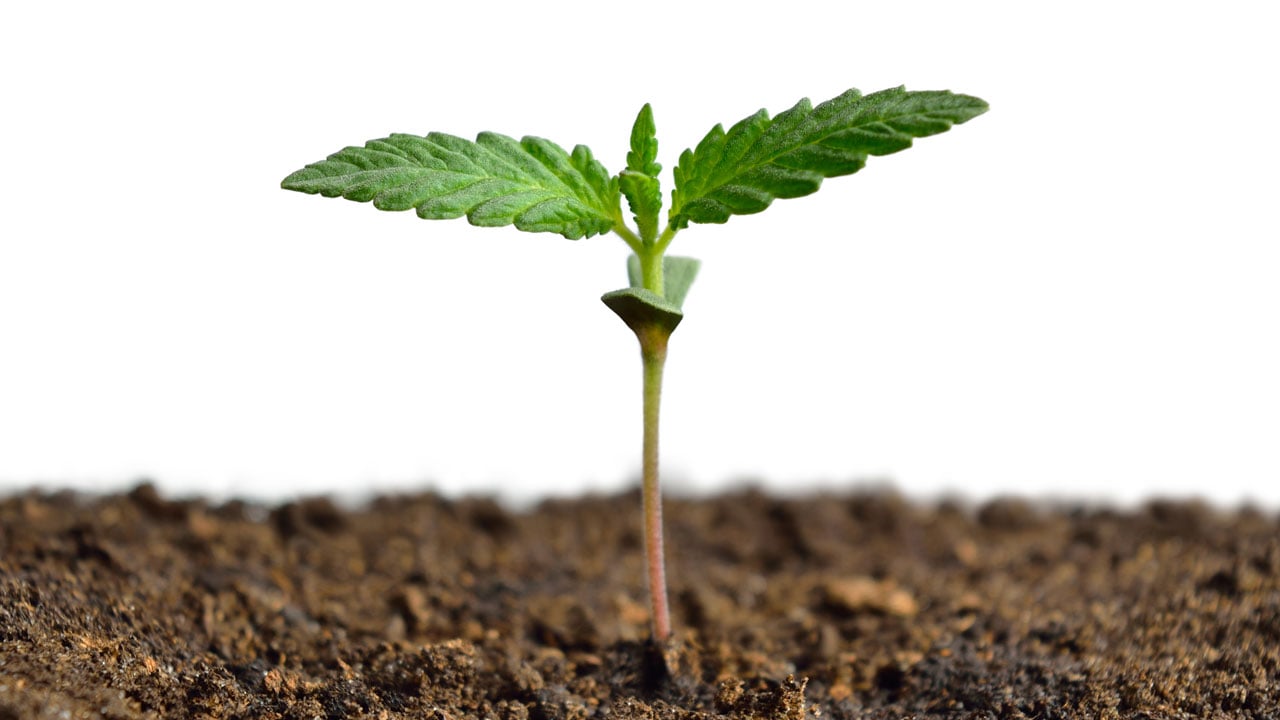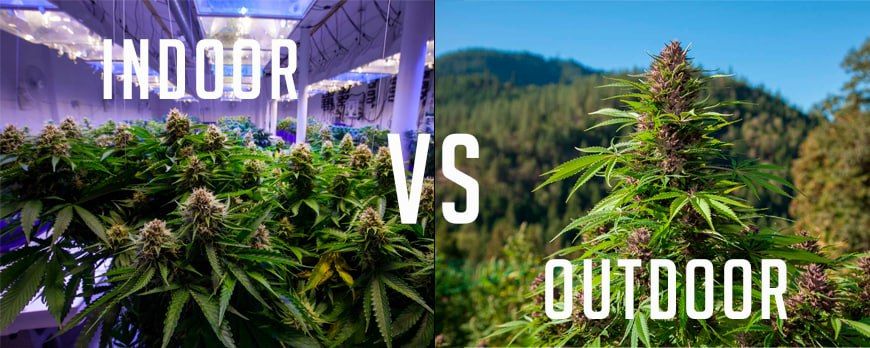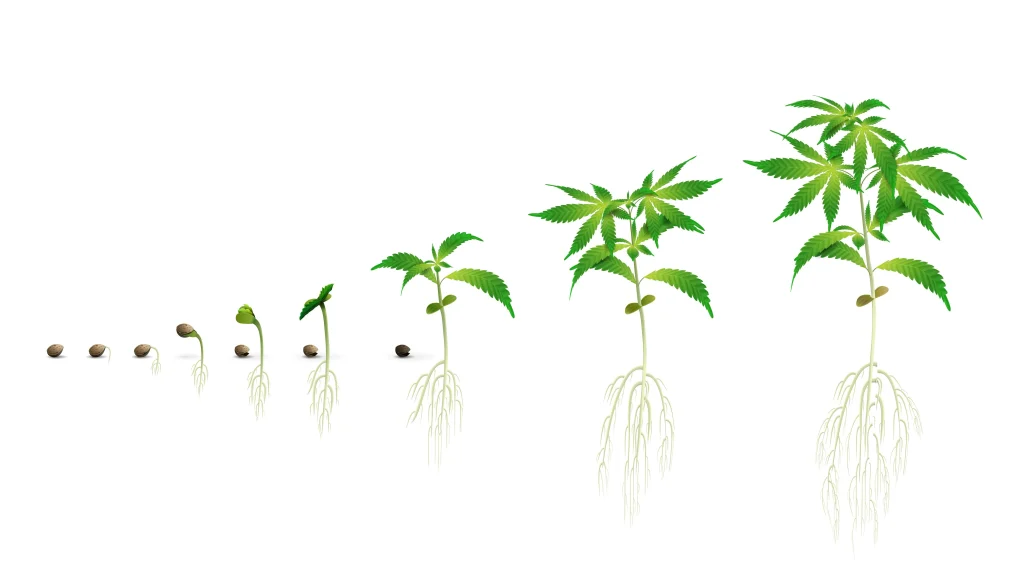- You have no items in your shopping cart
- Continue Shopping

Cannabis cultivation is a rewarding experience for those who enjoy gardening and want to control the quality of their own cannabis. Whether you’re a seasoned grower or a beginner, growing cannabis offers the chance to enjoy fresh, homegrown buds with greater potency and flavor. In South Africa, where the climate varies, understanding the best practices for growing cannabis can make a significant difference in your final harvest.
This guide will take you through the complete process of growing cannabis, from selecting the right strain to harvesting and curing your crop, with a focus on optimal growing conditions for both indoor and outdoor environments.
1. Choosing the Right Cannabis Strain
Selecting the right cannabis strain is the first step in your cultivation journey. Cannabis strains are typically divided into three categories: Indica, Sativa, and Hybrid.
- Indica strains are typically known for their calming, sedative effects. These plants tend to be short, bushy, and have dense growth. They are often a good choice for those looking to grow indoors or in smaller spaces.
- Sativa strains have more energizing effects, making them ideal for daytime use. These plants are tall, lanky, and have a longer flowering period. They tend to do well outdoors, especially in areas with abundant sunlight.
- Hybrid strains combine characteristics of both Indica and Sativa. These varieties are versatile and can offer a balanced growth pattern and effects, making them suitable for both indoor and outdoor environments.
In South Africa, the climate varies significantly from region to region. The warm, sunny weather in many parts of the country is well-suited to outdoor cultivation, especially for Sativa-dominant hybrids. However, Indica-dominant strains may be better suited for indoor environments or controlled outdoor spaces.
2. Indoor vs. Outdoor Growing: Choosing the Best Option
When it comes to cannabis cultivation, deciding whether to grow indoors or outdoors plays a crucial role in your plant’s success. Both methods have their unique benefits and challenges.

Indoor Growing
Indoor growing gives you full control over your plant’s environment. You can regulate factors such as temperature, humidity, and light, allowing you to optimize conditions for your cannabis plants year-round. This is particularly useful in areas where outdoor growing conditions might not be ideal or when you want to grow cannabis throughout the year.
For indoor growing, you’ll need to invest in artificial lighting systems like LED, HPS, or CFL lights. Maintaining the right temperature and humidity is key. The optimal temperature for indoor cannabis cultivation is between 20°C and 28°C, with humidity levels ranging from 40% to 60%. Adequate air circulation is essential, so consider installing fans or ventilation systems to prevent stale air, which can lead to mold and poor plant health.
Outdoor Growing
Outdoor cultivation allows your cannabis plants to benefit from natural sunlight, which is more energy-efficient than artificial lighting. The outdoor growing environment also provides your plants with more space to grow, allowing them to reach their full potential.
In South Africa, areas with warm, sunny conditions are ideal for growing cannabis outdoors. The temperature should typically range from 22°C to 30°C during the day, with cooler nighttime temperatures around 15°C to 20°C. If you’re growing in a region with heavy rainfall or extreme temperatures, you might want to protect your plants with a greenhouse or a similar structure to shield them from harsh conditions.
While outdoor growing can produce large plants with higher yields, it also exposes them to potential risks such as pests, diseases, and environmental factors like unpredictable weather. It’s important to monitor your plants closely and take preventative measures as needed.
3. The Stages of Cannabis Growth
Cannabis plants go through several distinct growth stages. Understanding each stage and providing the necessary care will ensure that your plants grow healthy and produce high-quality buds.

1. Germination (1-7 days)
Germination is the process where a cannabis seed begins to sprout. It’s the initial step in the cannabis growth cycle and occurs when the seed absorbs moisture, causing the outer shell to crack open. A small root, called a radicle, emerges from the seed, followed by the stem that will grow upwards toward the light. To germinate your seeds, place them in a wet paper towel or in a glass of water for 24 to 48 hours, ensuring the environment is warm and dark. The temperature should be around 20°C to 25°C. Once the seed has sprouted, it’s ready to be planted in soil or your chosen medium.
2. Seedling Stage (2-3 weeks)
After germination, the cannabis plant enters the seedling stage. At this point, the plant is still fragile and requires careful attention. It will begin to develop its first true leaves, which are distinct from the round cotyledon leaves that sprout during germination. Seedlings need 18-24 hours of light each day, with moderate humidity levels around 60-70%. Be careful not to overwater your seedlings during this stage, as their root systems are still small and can easily become waterlogged. It’s important to provide a nutrient-rich environment with proper soil drainage to encourage healthy growth. Your plants will begin to grow taller and stronger as they establish their root systems and start to develop their unique characteristics.
3. Vegetative Stage (2-8 weeks)
The vegetative stage is where the cannabis plant begins to grow rapidly. During this phase, the plant focuses on building its structure, producing leaves, and establishing a strong root system. It’s essential to provide your plants with plenty of light—typically 18-24 hours per day—to encourage strong growth. Cannabis plants during the vegetative stage need more water and nutrients, especially nitrogen and potassium, which promote healthy leaf and root development. Depending on the strain and growing conditions, the vegetative phase can last anywhere from 2 to 8 weeks. You can also begin training techniques during this stage, such as topping (cutting off the top of the plant to encourage branching) or LST (Low Stress Training), which helps manage the plant’s growth and optimize light exposure to all areas.
4. Pre-flowering (1-2 weeks)
Pre-flowering is the stage where cannabis plants begin to show their sex. This typically happens after the plant has developed enough branches and leaves. The pre-flower is found at the nodes, where the branches meet the stem. It’s at this point that growers can identify male and female plants.
- Female plants develop small, hair-like pistils (white hairs) at the nodes.
- Male plants produce small sacs that contain pollen.
It’s crucial to identify male plants early and remove them before they can pollinate the females, as this will negatively affect your harvest. Pollination leads to the production of seeds, which reduces the potency and quality of the buds.
5. Flowering Stage (6-8 weeks)
The flowering stage is when cannabis plants begin to produce the buds that will eventually be harvested. The plant’s growth slows down, but the flowers develop and mature during this period. The key to successful flowering is providing your plants with 12 hours of light and 12 hours of complete darkness each day. Disrupting the dark cycle can stress the plant and affect its development. During flowering, the plant will need more phosphorus and potassium to support bud development. As the flowers mature, you’ll notice the pistils turning from white to reddish-brown, and the buds will become denser. The final product is coated with trichomes, small resin glands that contain THC, CBD, and other cannabinoids. You’ll know your plant is ready for harvest when the pistils have turned brown, and the trichomes are milky white or amber in color.
6. Harvesting
Harvesting is the final stage in the cannabis growth cycle. To harvest, cut your plants at the base and separate the branches. Hang them upside down in a dark, cool room with humidity levels around 50-60% for about 7-14 days. This drying process helps preserve the flavor and potency of the buds. After drying, you can begin the curing process by placing the buds in airtight jars. Open the jars daily for a few minutes to release moisture and let fresh air in. This process can take 1-3 weeks and helps improve the taste, aroma, and smoothness of the final product.
Conclusion
Growing cannabis in South Africa requires patience, knowledge, and proper care. By selecting the right strain, maintaining optimal growing conditions, and understanding each stage of the cannabis life cycle, you can ensure a healthy, successful harvest. Whether you’re growing indoors or outdoors, following these tips will help you produce high-quality cannabis with excellent potency, flavor, and yield.
Take your time, enjoy the process, and soon you’ll have a thriving cannabis garden to enjoy for months to come.
Disclaimer
This content is for educational purposes only. The information provided is derived from research gathered from external sources. Cannabis products are intended for adults 18 and over. Please consume responsibly. Always consult with a healthcare professional before using any cannabis products. Keep away from pets and children and do not use if you are pregnant, breastfeeding, or have any pre-existing medical conditions.
- https://mrgrowit.com/post/how-to-grow-cannabis-beginners-guide/
- https://cleanleaf.com/the-stages-of-cannabis-growth.php
- https://vaperite.co.za/cannabis
